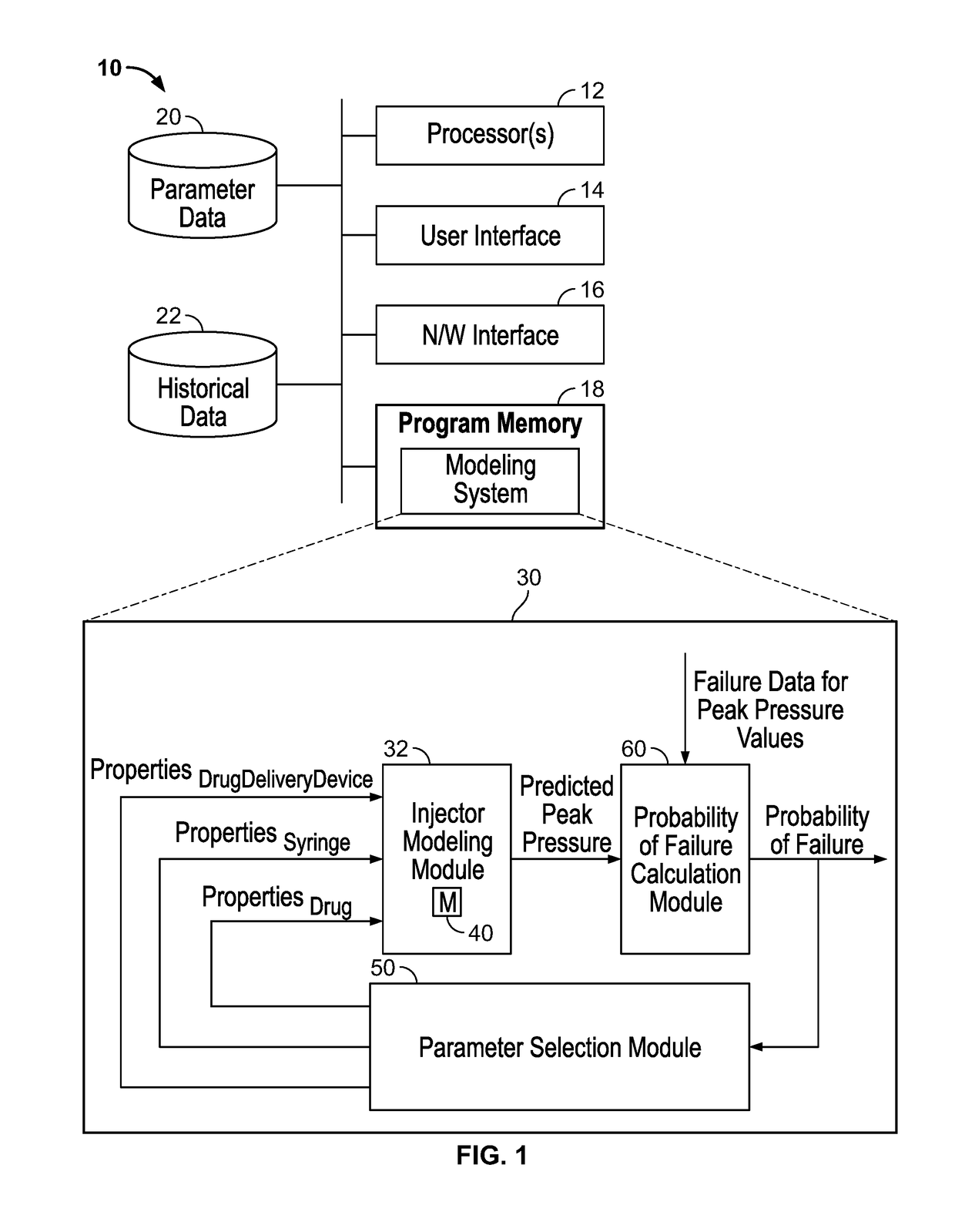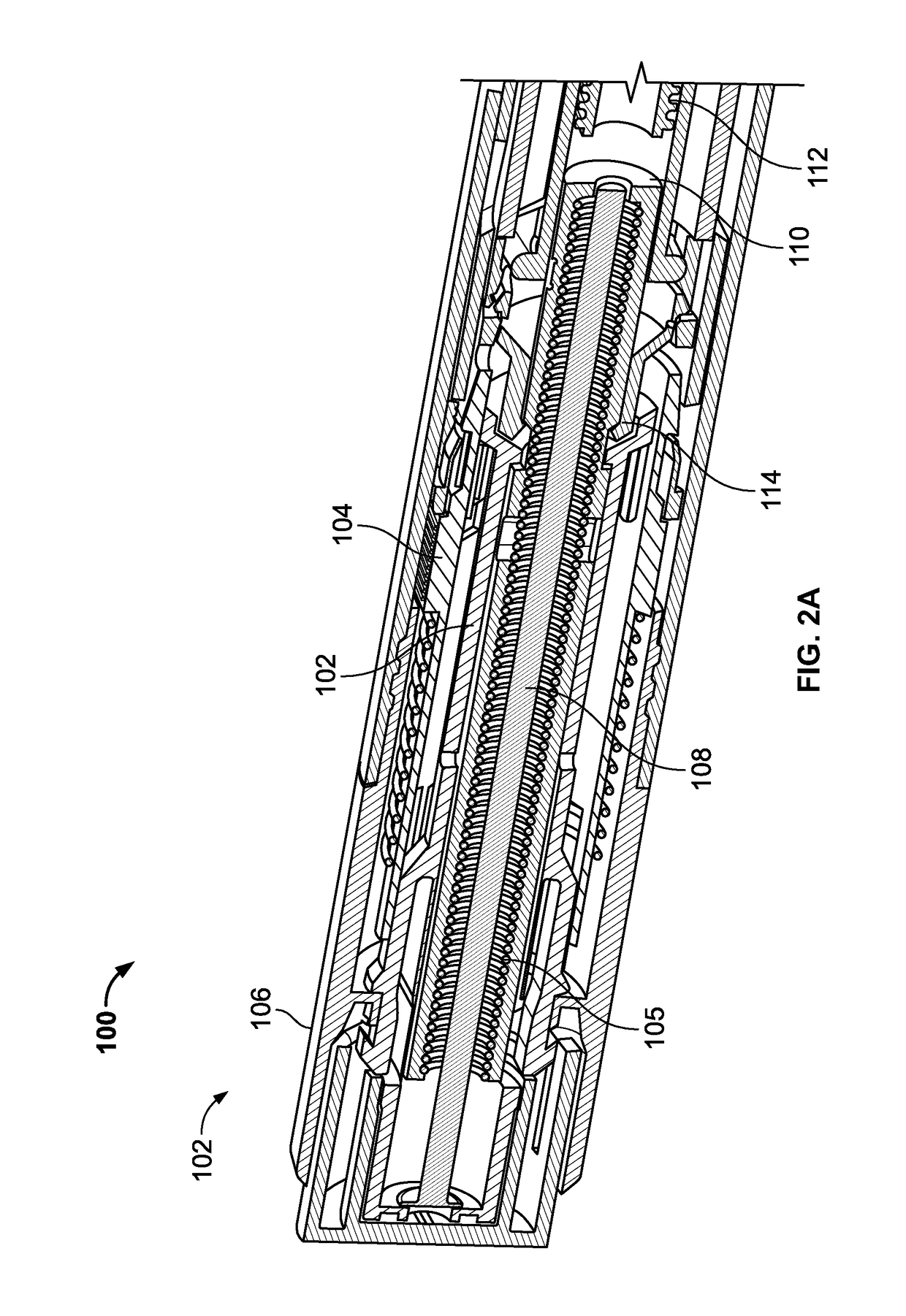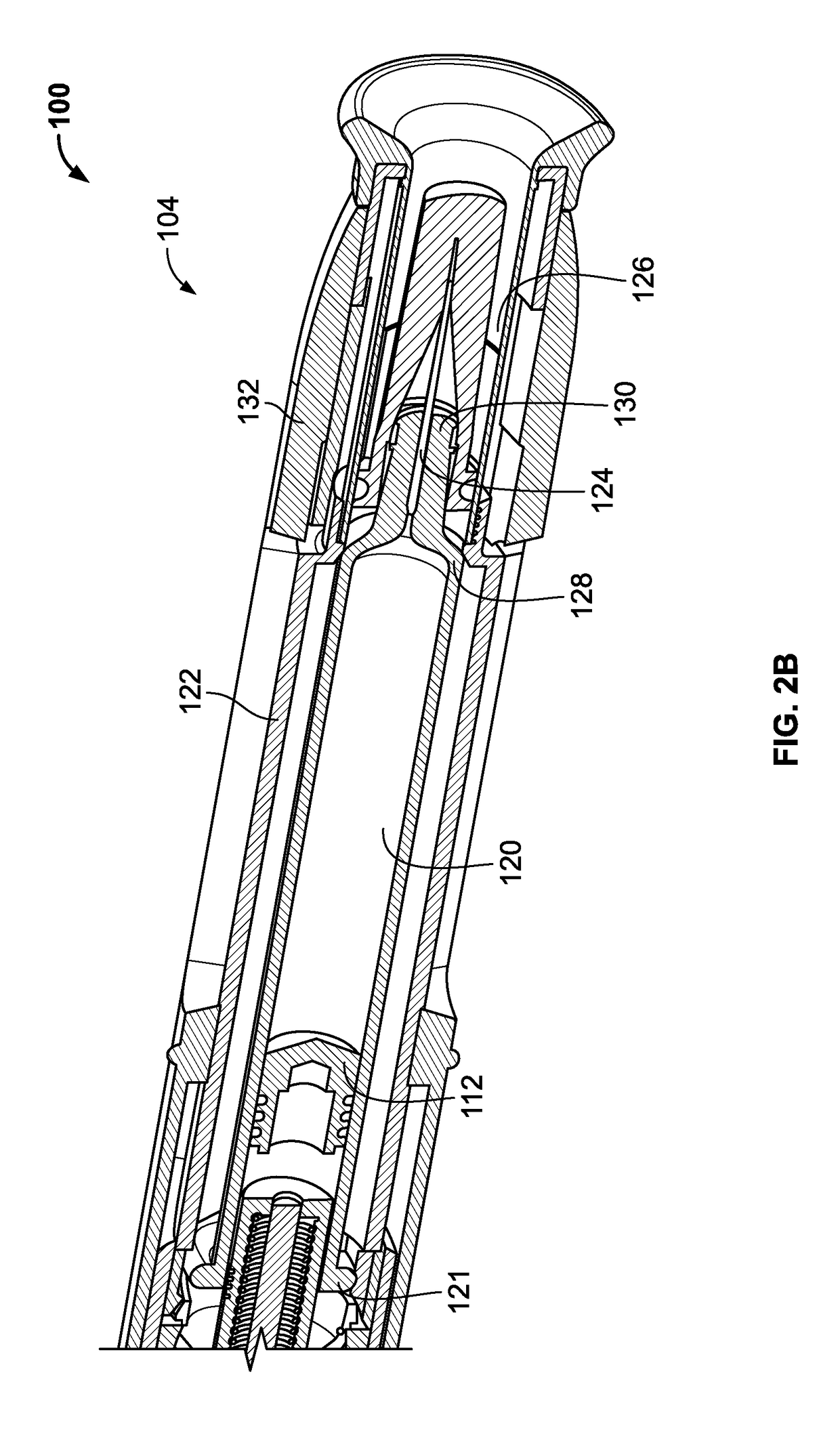Reducing probability of glass breakage in drug delivery devices
a technology of glass breakage probability and drug delivery, which is applied in the direction of instruments, stochastic cad, cad techniques, etc., can solve the problem of difficult to predict glass breakage in general
- Summary
- Abstract
- Description
- Claims
- Application Information
AI Technical Summary
Benefits of technology
Problems solved by technology
Method used
Image
Examples
Embodiment Construction
System Overview
[0033]FIG. 1 is a block diagram of an example computing system 10 in which some of the modeling and parameter selection techniques of this disclosure can be implemented.
[0034]The computing system 10 can include a single computer, a portable computer, a server or a group of servers. In an example implementation, the computing system 10 includes one or more processors 12 (e.g., CPUs), a user interface 14 (e.g., a touchscreen, a monitor and a keyboard), a network interface 16 configured for wired and / or wireless communications, a non-transitory computer-readable program memory 18, a parameter data storage 20, and a historical data storage 22, interconnected by a communication link such as a digital bus. The program memory 18 can include persistent (e.g., a hard disk) as well as non-persistent (e.g., RAM) components. The storage components 20 and 22 can be implemented in a local or remote memory in accordance with any suitable data storage techniques (e.g., as a relationa...
PUM
 Login to View More
Login to View More Abstract
Description
Claims
Application Information
 Login to View More
Login to View More - R&D
- Intellectual Property
- Life Sciences
- Materials
- Tech Scout
- Unparalleled Data Quality
- Higher Quality Content
- 60% Fewer Hallucinations
Browse by: Latest US Patents, China's latest patents, Technical Efficacy Thesaurus, Application Domain, Technology Topic, Popular Technical Reports.
© 2025 PatSnap. All rights reserved.Legal|Privacy policy|Modern Slavery Act Transparency Statement|Sitemap|About US| Contact US: help@patsnap.com



